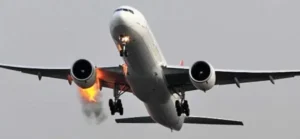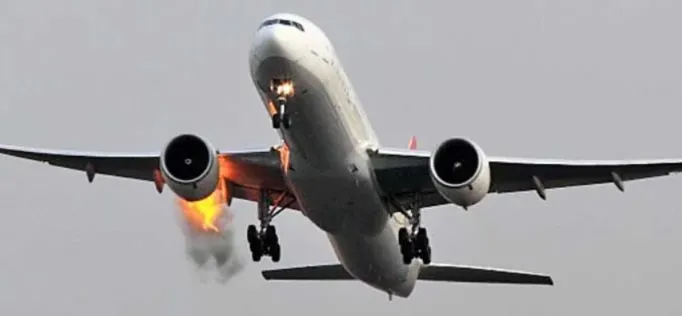
If you don’t put a cabin fire out in eight minutes or less, you probably won’t. If you are on fire and don’t land the airplane in fifteen minutes or less, you probably won’t.
— James Albright
History:
Traditionally, the philosophy for in-flight fires was to fight them while considering a landing. This mindset shifted due to two catastrophic incidents.
- Air Canada Flight 797 (1983): The captain delayed landing by 20 minutes to tackle a lavatory fire. When the plane landed and the exits were opened, the airplane caught fire leading to the death of 23 people.
- Swissair 111 (1998): A perceived air conditioning issue, which turned out to be an electrical fire, led the crew to initially turn back to Boston. However, delays due to checklists, pre-landing preparations, and fuel dumping caused them to crash into the water 21 minutes after the initial detection. All 243 people on board died.
Research has shown that if a cabin fire isn’t extinguished within 8 minutes, it’s likely to become uncontrollable. Moreover, if the plane isn’t landed within 15 minutes of such an uncontrollable fire, it may result in the loss of both the aircraft and everyone aboard.
The modern approach underscores immediate landing as a priority. In the event of a cabin fire, the main focus is to land the plane quickly, possibly without referring to checklists, and tackle the fire if feasible. Speed and decisiveness are pivotal to ensuring safety.

Primary Causes of In-Flight Fires:
- Wiring Failures: Most concealed in-flight fires stem from electrical arcs in wire bundles. Contaminated insulation materials, spillage, accumulated dirt, lubricants, and corrosion inhibitors can facilitate flame spread. Resetting tripped circuit breakers can also overheat wiring, leading to arcing and fire.
- Electrical Component Failures: Electrical motors can overheat and ignite surrounding materials, especially when contaminants are present.
- Lightning Strikes: Rare, but some fires have been traced back to lightning strikes that ignited faulty or contaminated insulation.
- Bleed Air Leaks: Aircrafts using engine’s bleed air rely on pneumatic lines. Failure in these lines can cause high temperatures, damaging equipment, wiring, and causing fires.
- Faulty Circuit Protection: Circuit breakers that don’t trip when detecting high currents might lead to unit or wiring overheating and subsequent ignition.
- Lithium Ion Batteries: These batteries can overheat and go into thermal runaway, leading to fires, heavy smoke, and potential explosions. If one cell in a battery pack enters thermal runaway, it can cause adjacent cells to follow, leading to a chain-reaction of flaring fires.
Indicators of Concealed Fires on Aircraft:
- Abnormal Operations: Any unexpected or uncommanded behavior of aircraft components can hint at an underlying fire. Damages to electrical connections or the components can arise from hidden fires. Cabin crews should promptly inform the flight crew about any such malfunctions as per company procedures.
- Circuit Breakers: The tripping of circuit breakers, especially multiple ones like those connected to entertainment systems or coffee makers, might suggest damage in concealed areas linked to those components.
- Hot Spots: Detecting unusually warm areas on floors, walls, ceilings, or panels warrants immediate investigation.
- Fumes: A sudden, unfamiliar odor might be an early warning sign of a fire. Such odors should not be dismissed, and their source should be determined swiftly.
- Visual Smoke: Smoke emanating from vents or gaps between interior panels, especially the ceiling, is a definitive indication of a problem. Immediate action should be taken to identify the origin.
Responding to In-flight Fires: Quick Actions and Best Practices
- Primary Priority: Land Fast: After detecting an in-flight fire, it’s crucial to land the plane within 14 minutes or less. History shows aircraft fires can become catastrophic rapidly. Tests reveal fires can become uncontrollable within 8-10 minutes if left unchecked.
- Address the Fire: Assign a crew member or a capable passenger to combat the fire. Develop an immediate action plan. Many aircrafts have extensive checklists which might take too long during emergencies. Based on past accidents, these checklists might not be completed fast enough to prevent uncontrollable fires.
- Starve the Fire from the Cockpit: Determine the exact origin of the fire. Devising an immediate action plan is essential. Some aircrafts, like the Challenger 605, can automatically cut off non-essential electrical loads. In others, an immediate action plan can be completed within 30 seconds by following quick steps, such as putting on oxygen masks, deploying passenger oxygen, shutting off certain switches, and more.
- Navigate to the Nearest Runway: Aim for the nearest suitable runway, ideally one with an ILS and fire coverage. Fly at maximum operating speed (VMO) and don’t be concerned with typical restrictions, such as the 250 knots below 10,000 feet.
- Declare an Emergency: Inform ATC about the situation and your intentions. Retain a single, preferably the tower’s, frequency as there may come a time when changing frequencies will be challenging.
- Autopilot Control: Engage the autopilot as early as possible, preferably on an ILS. This allows for potential automated landing, especially if visibility becomes limited.
- Configuration for Landing: Learn how late you can configure the aircraft for landing. Understand the distances and speeds required for slowing down and configuring for landing.
- Landing without Visibility: Be familiar with the critical controls by touch. For instance, understand how to extend landing gear or flaps without looking.
- Post-landing Communication: Coordinate with co-pilots and other crew members about post-landing tasks such as exit strategies and passenger safety. Inform the tower of your plans so rescue teams are aware.
- Land Safely: Even without a flare, most aircraft can endure a hard landing. Practicing no flare landings in simulators is advisable.
Overall, when confronted with an in-flight fire, the main objective is a rapid and safe landing. Every second counts, and the actions taken during those crucial moments can greatly affect the outcome.
Practice, Practice, Practice!
Check out these videos a simulated fires and emergencies:
Continued reading: https://www.code7700.com/cabin_fire.htm






